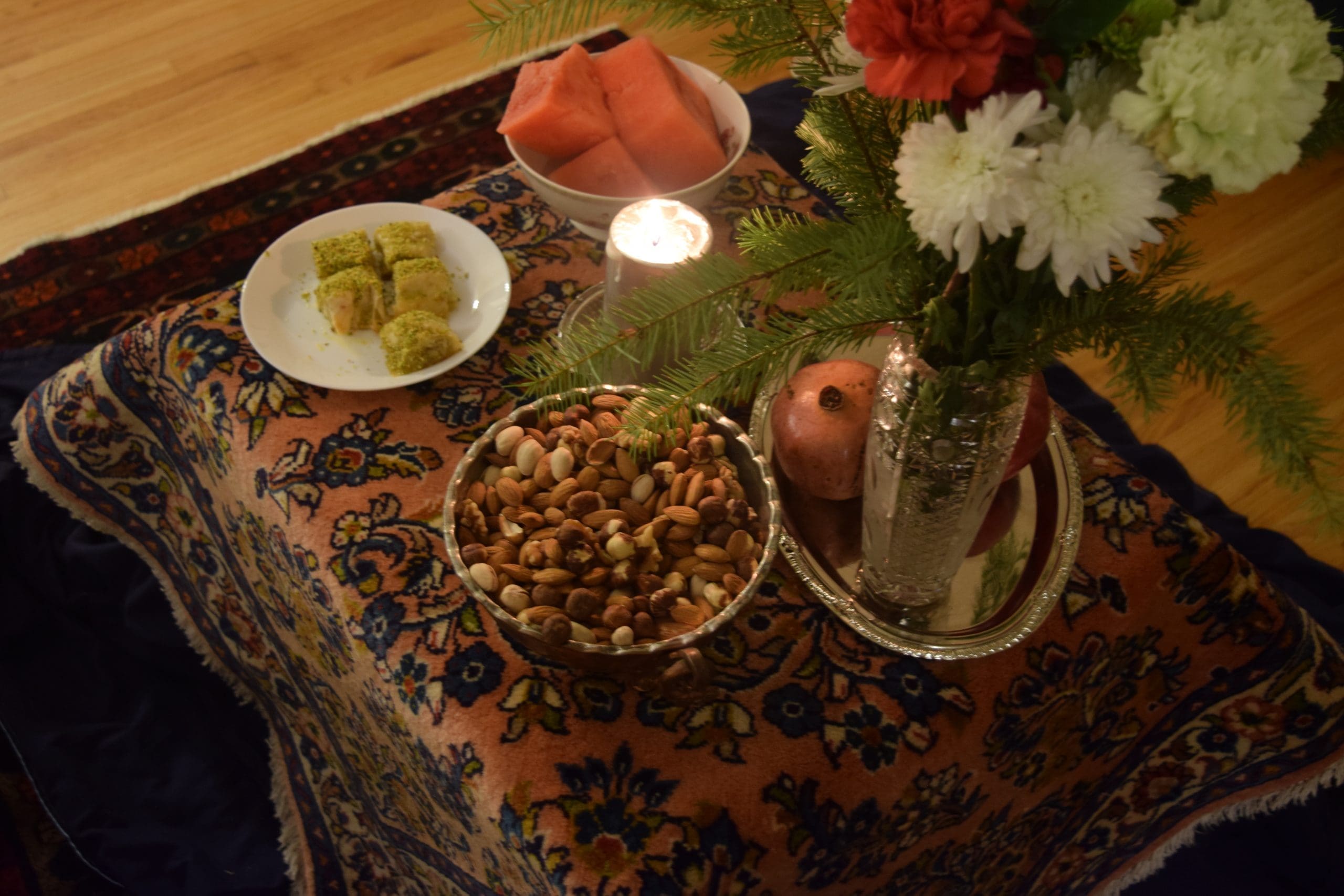Each group of people celebrate some days traditionally and these days are specious and important for them. There are customs that people do at these times and I think by doing that people feel more connected to their society and being a part of a whole.
We have a tradition around Christmas Eve in our calendar. Yalda Night is the second most important ceremony in the Persian calendar. The most common thing between Yalda and Christmas is red in colour!
Yalda is the longest and darkest night of the year (It was last night actually 20th December). It is a time when friends and family gather together(mostly at grandparents’ home) to eat, drink and read poetry (especially Hafez) until well after midnight. Fruits and nuts are eaten. pomegranates and watermelons are particularly significant. The red colour in these fruits symbolizes the crimson hues of dawn and the glow of life. The poems of Divan-e Hafez, which can be found in the bookcases of most Persian families, are read or recited on various occasions such as this festival and Nowruz(Persian new year)
As I mentioned before, it’s at the longest and darkest night of the year and In Zoroastrian they believed they should spend this night together and also happy to pass and defeat darkness (as a symbol of the devil). Yalda also means Birth of the sun! After Yalda night, days start to become longer and longer and so they celebrate that night as the end of darkness.
Nowadays people don’t think about the devil or darkness, all of these traditional things are an excuse to be happy together and make lovely memories. Also having pomegranates, watermelon, nuts and reeding Hafez poets are essentials!

